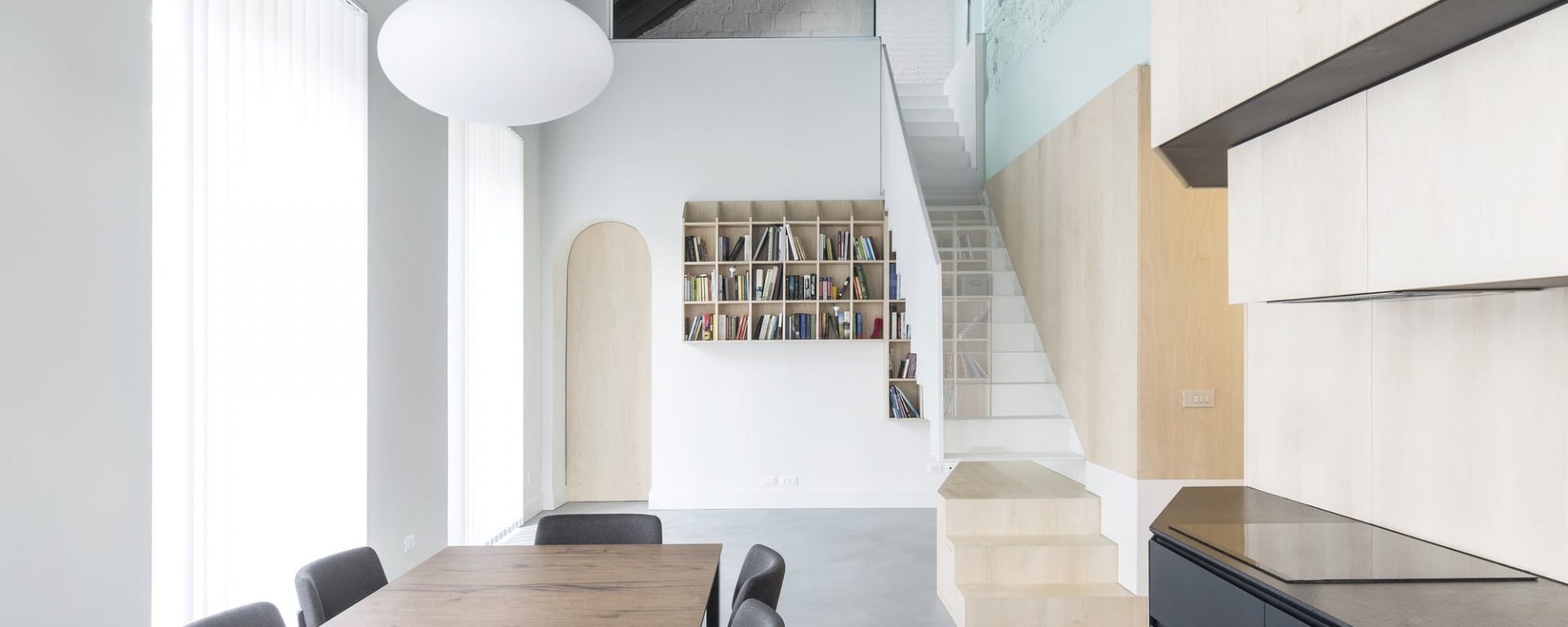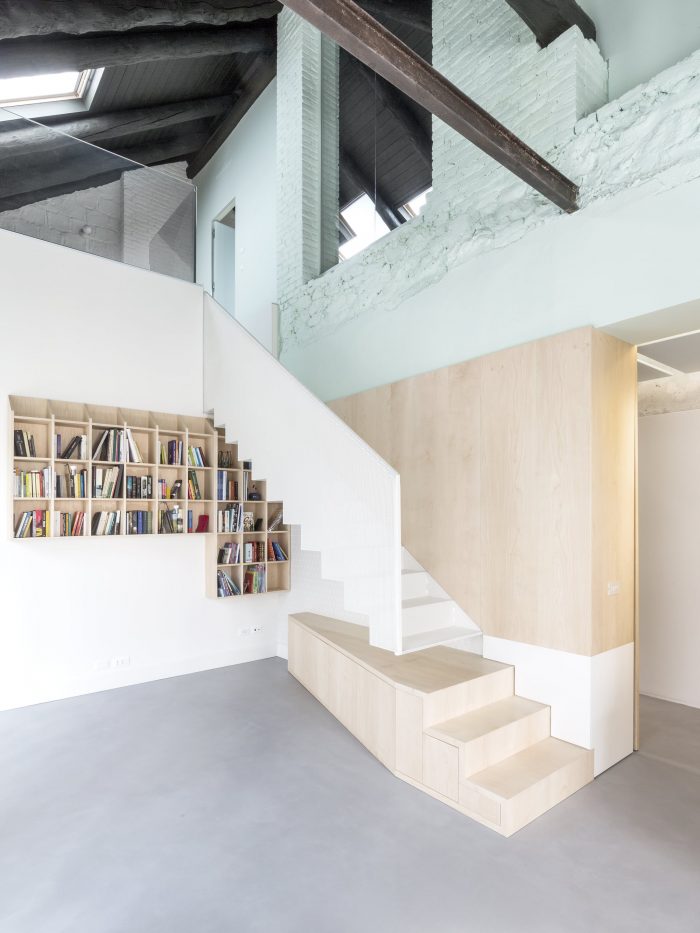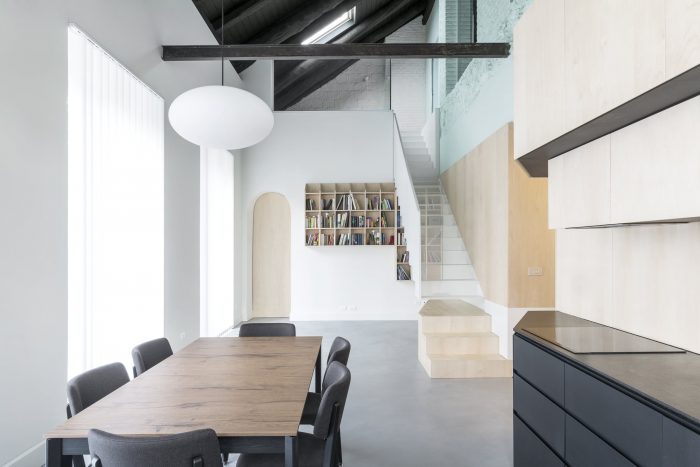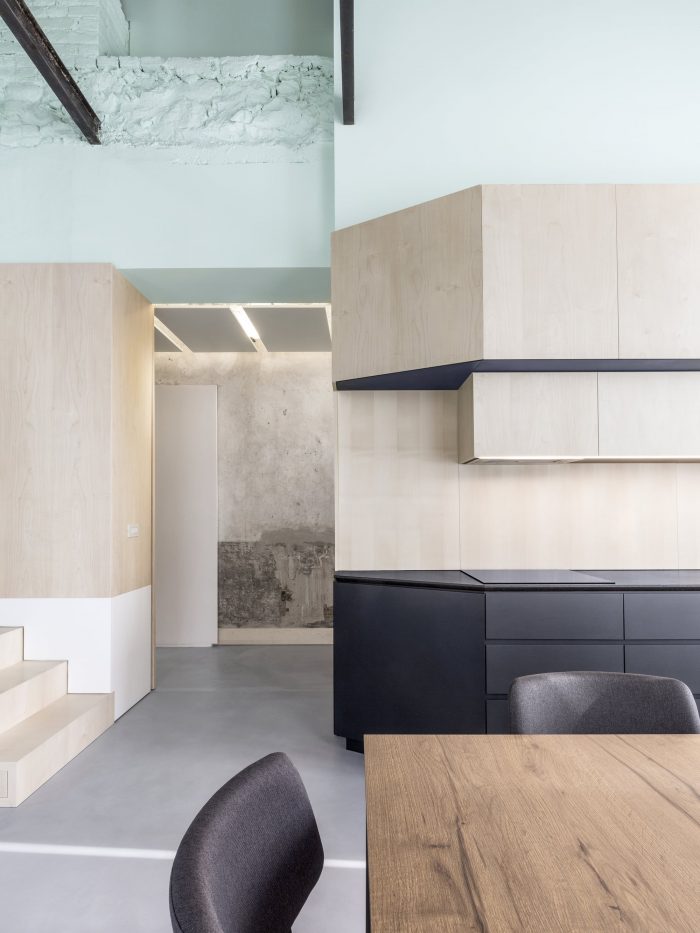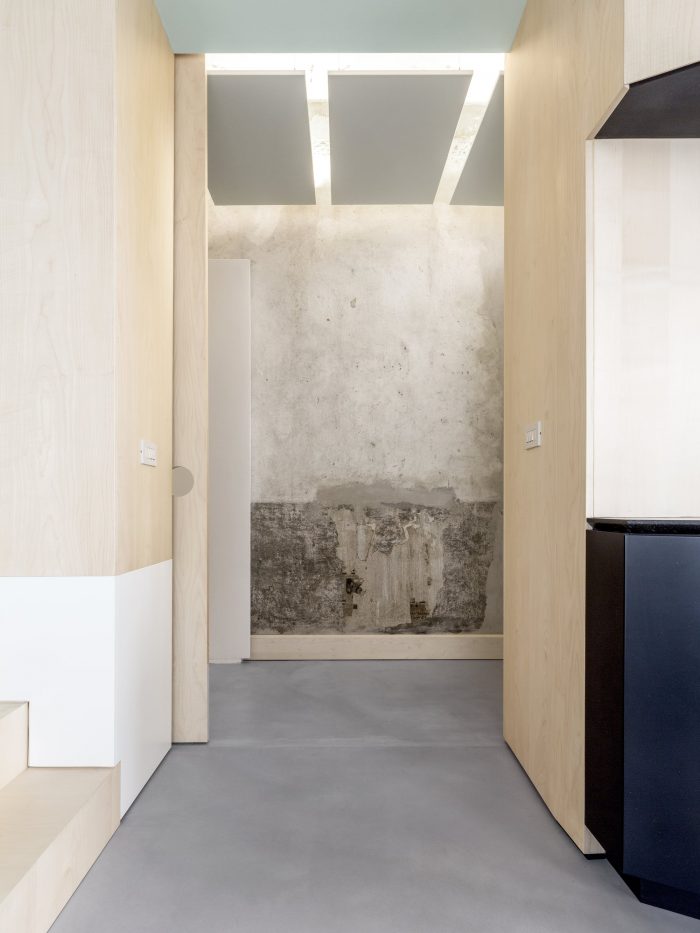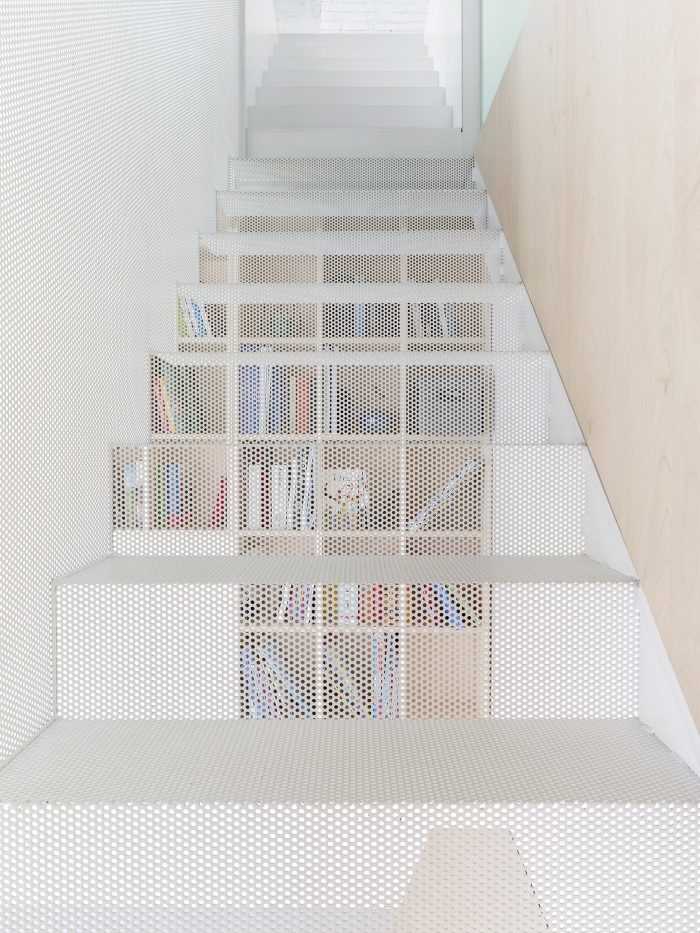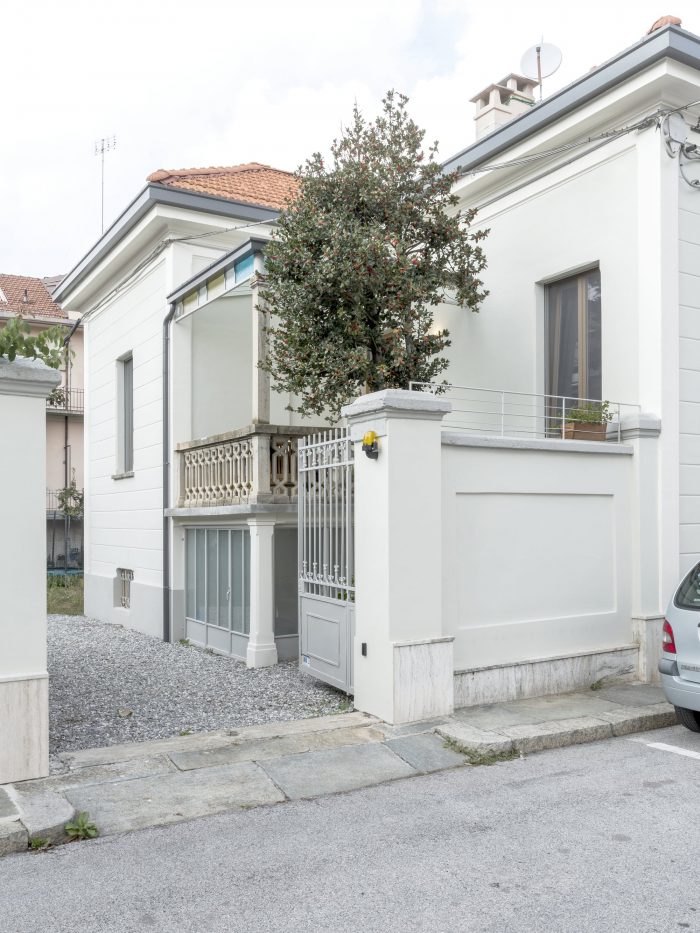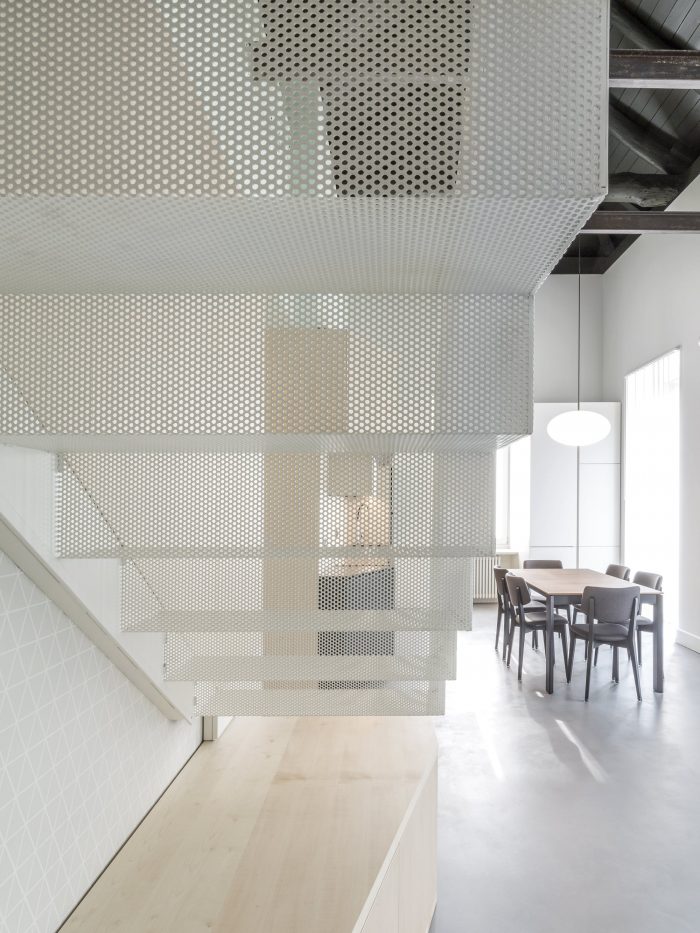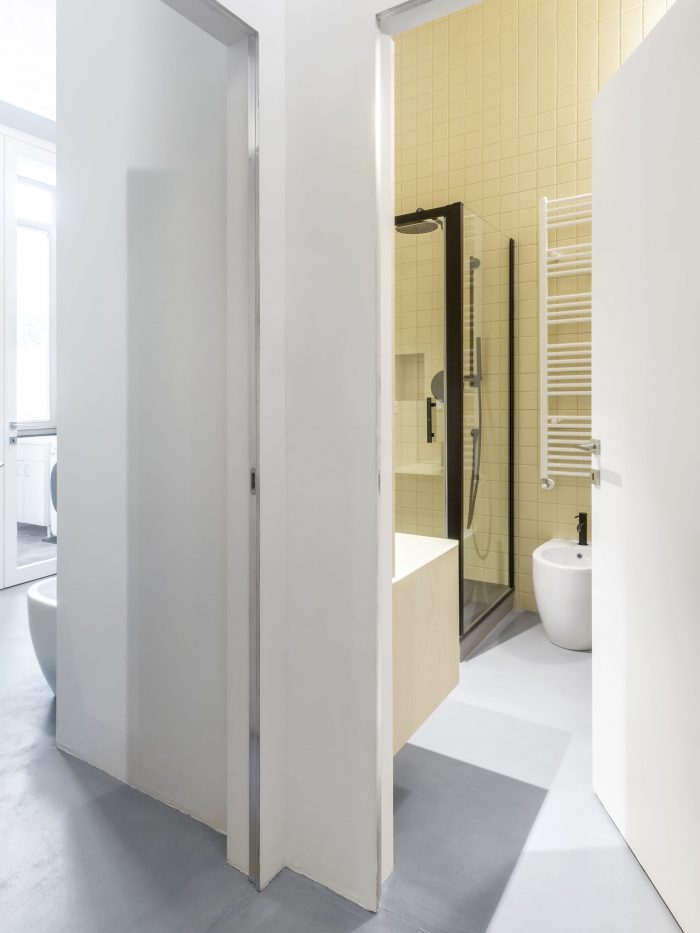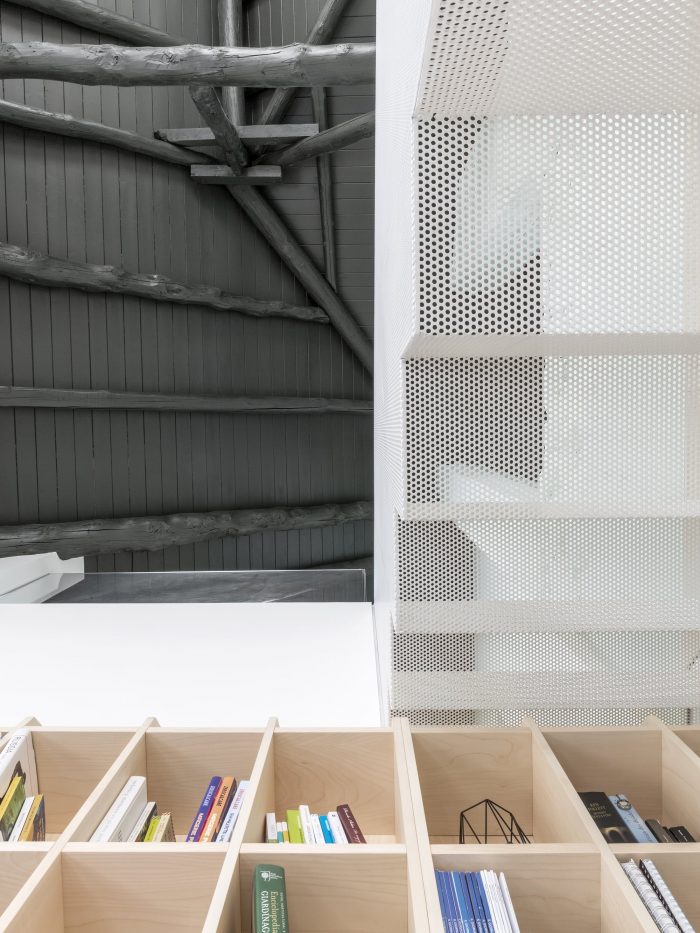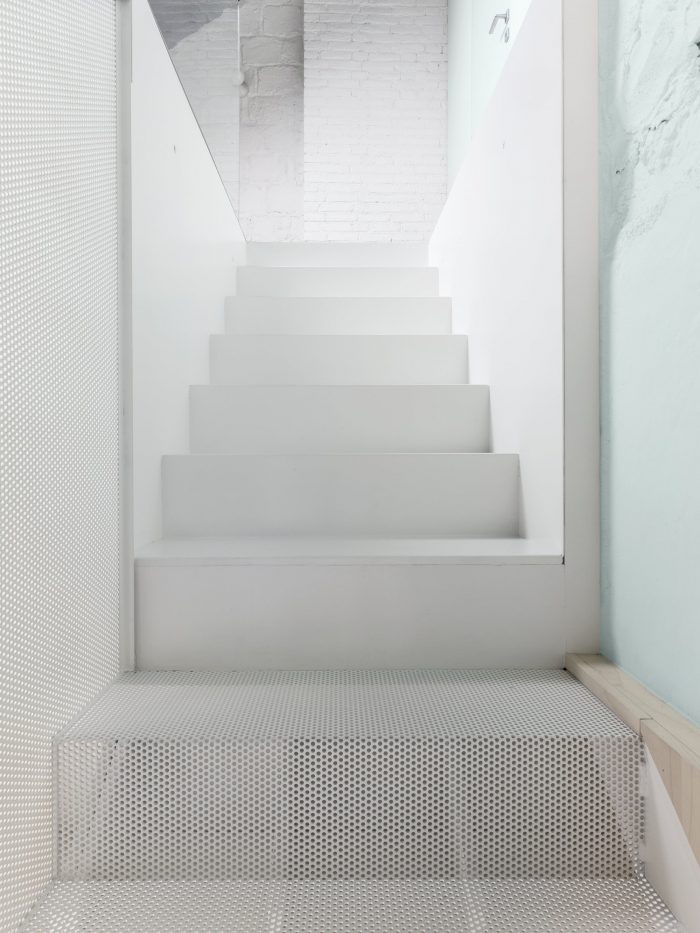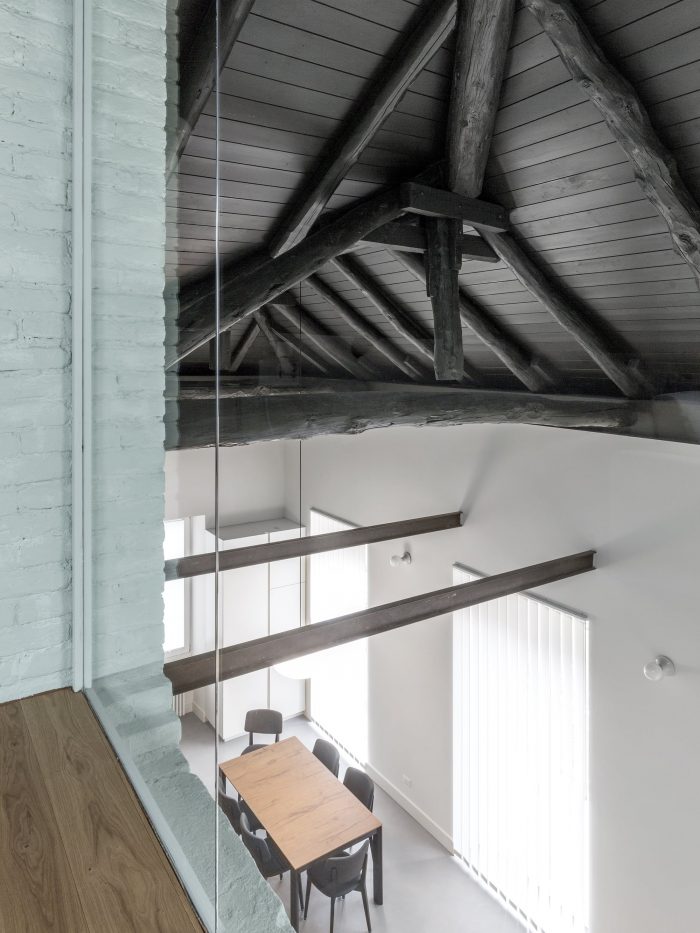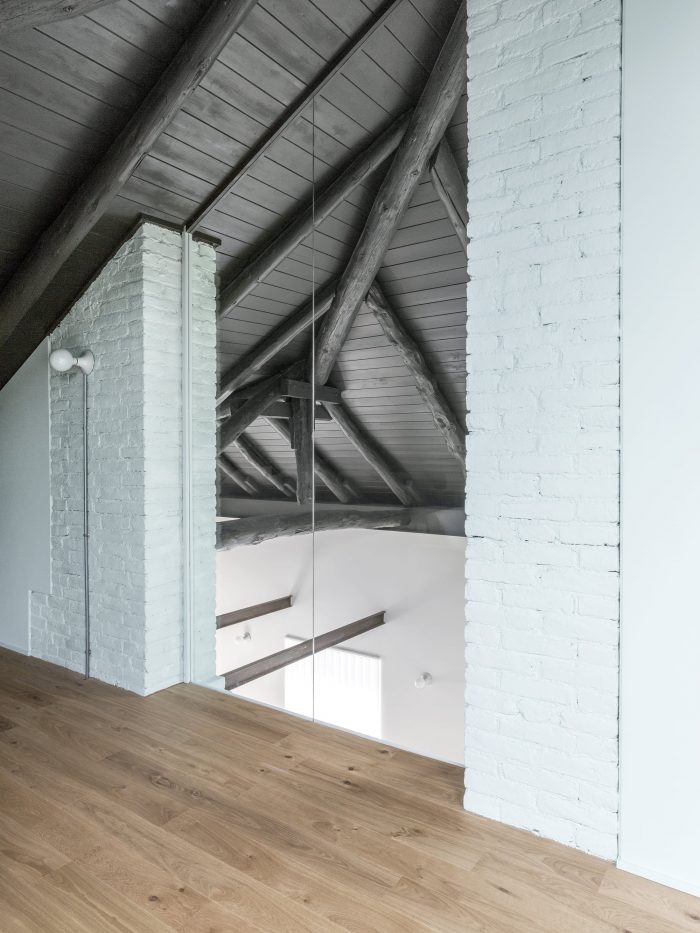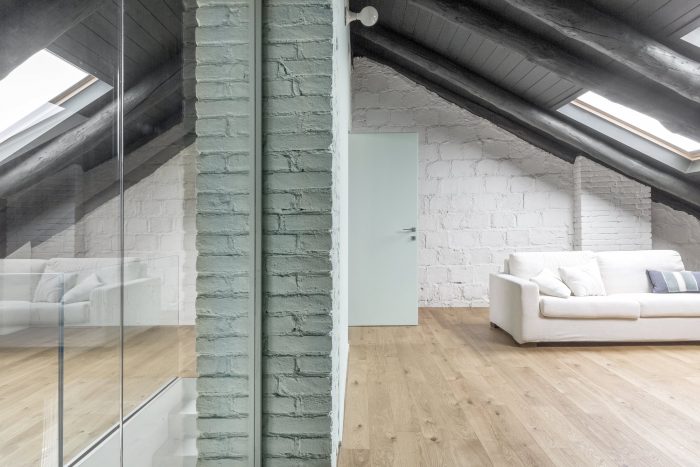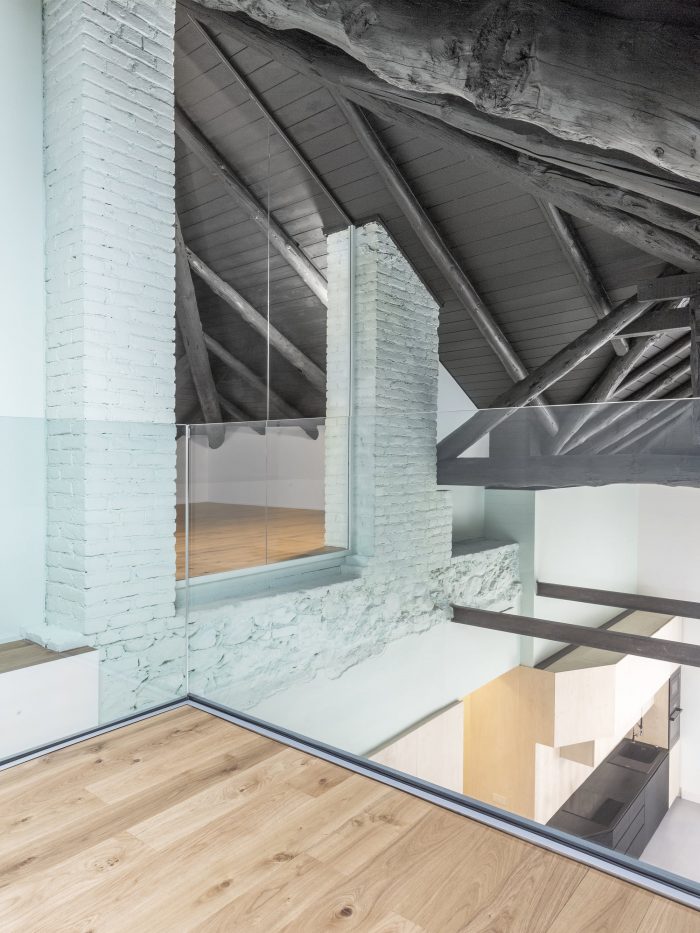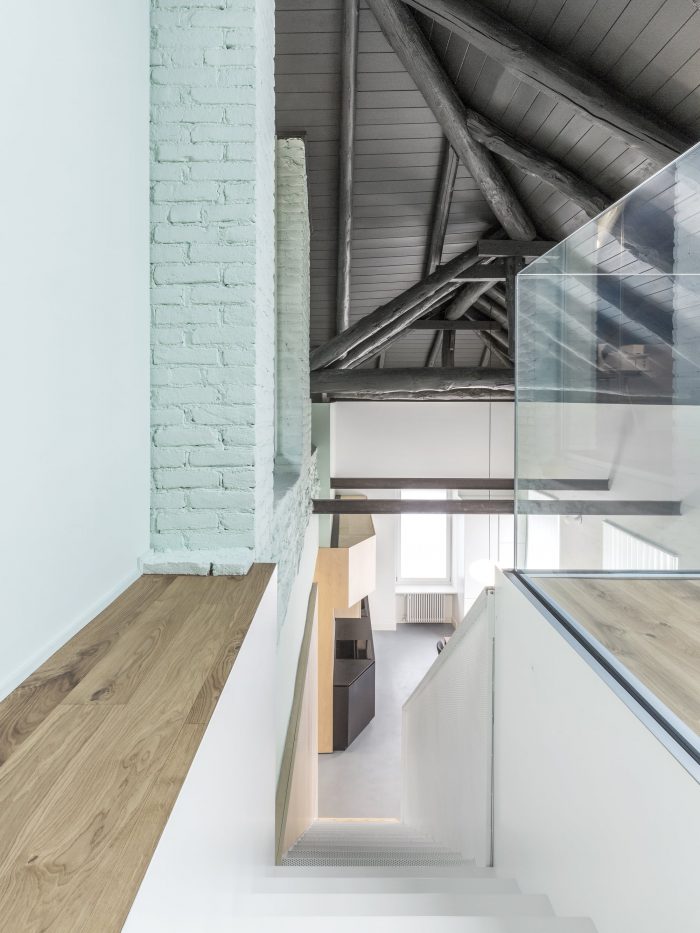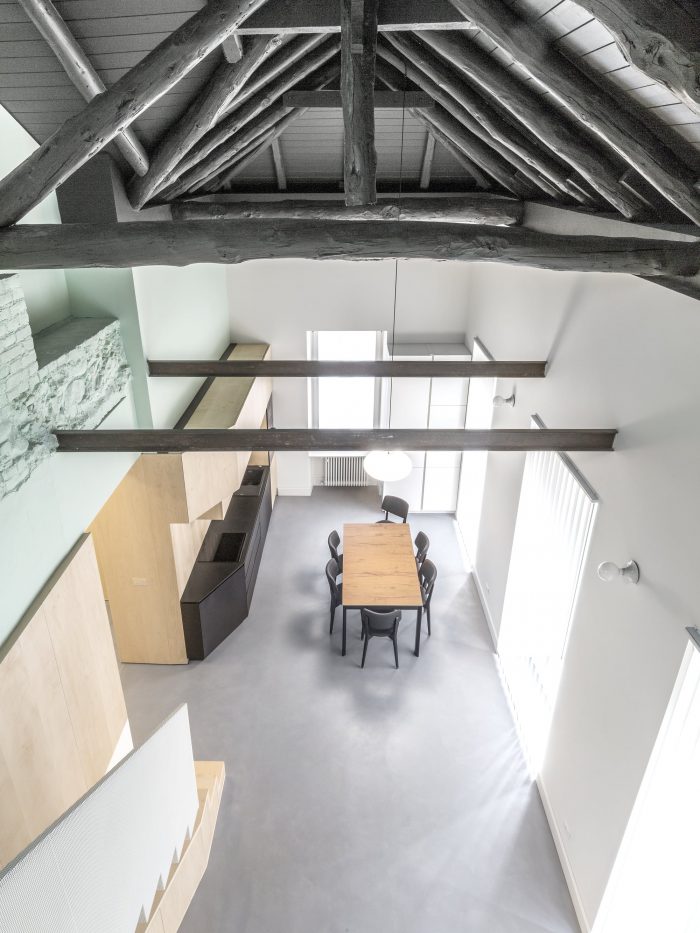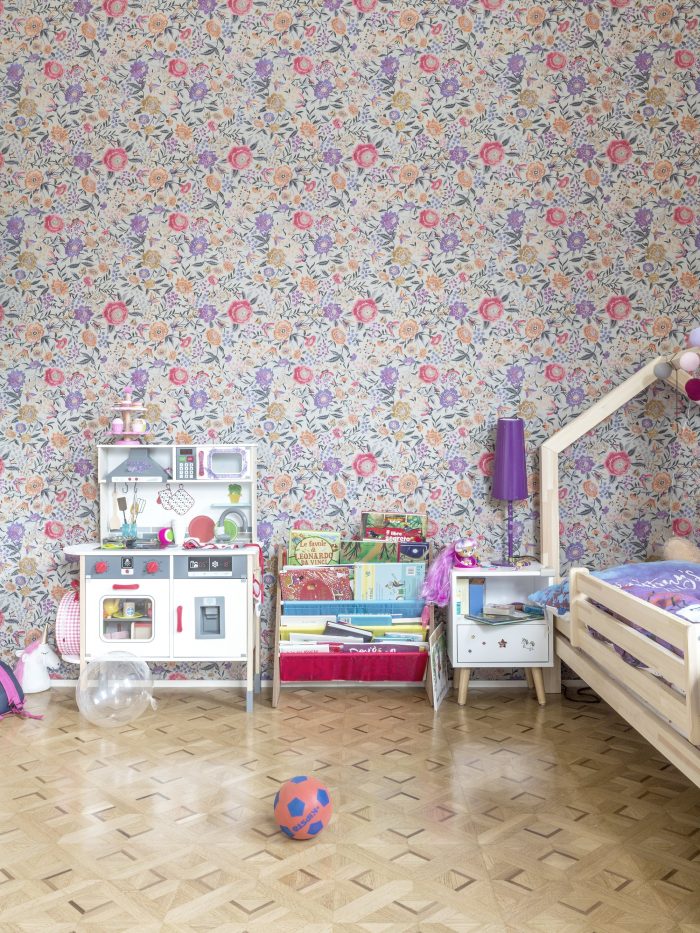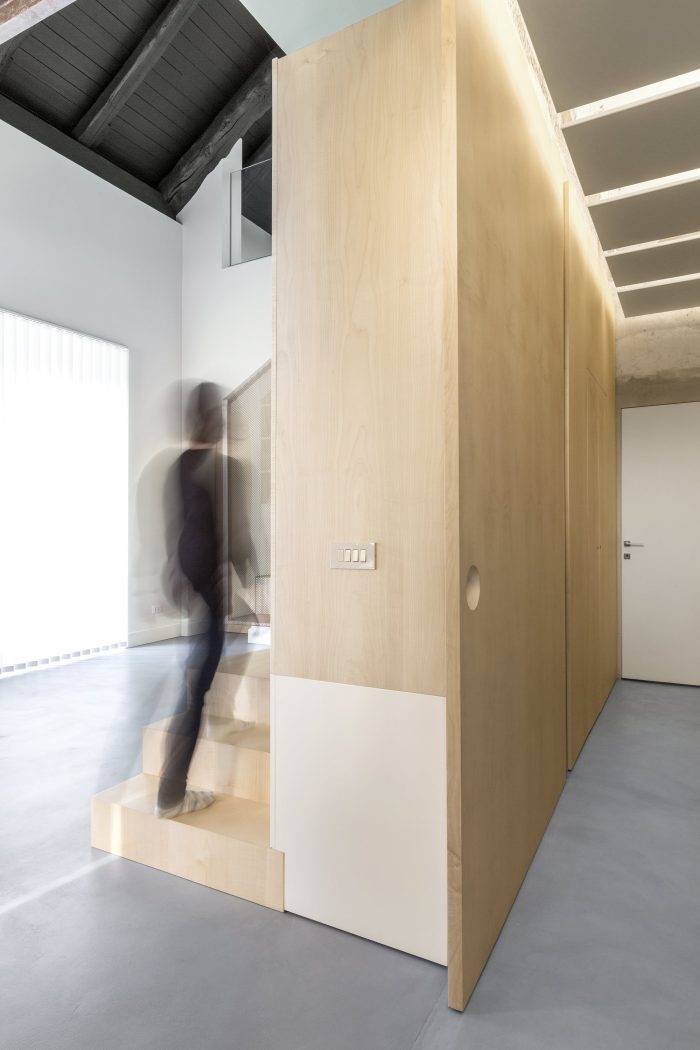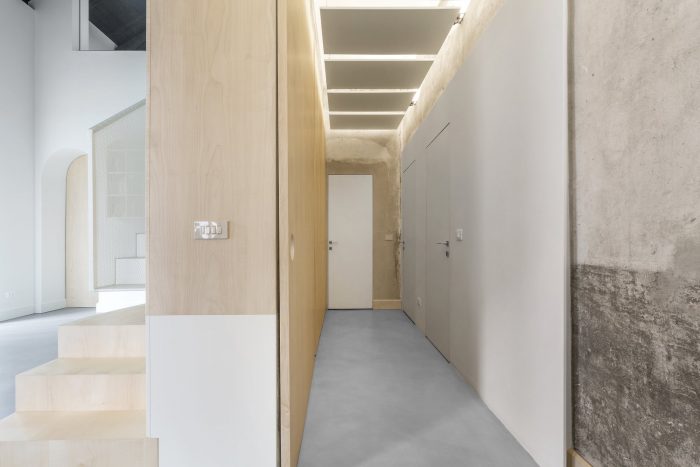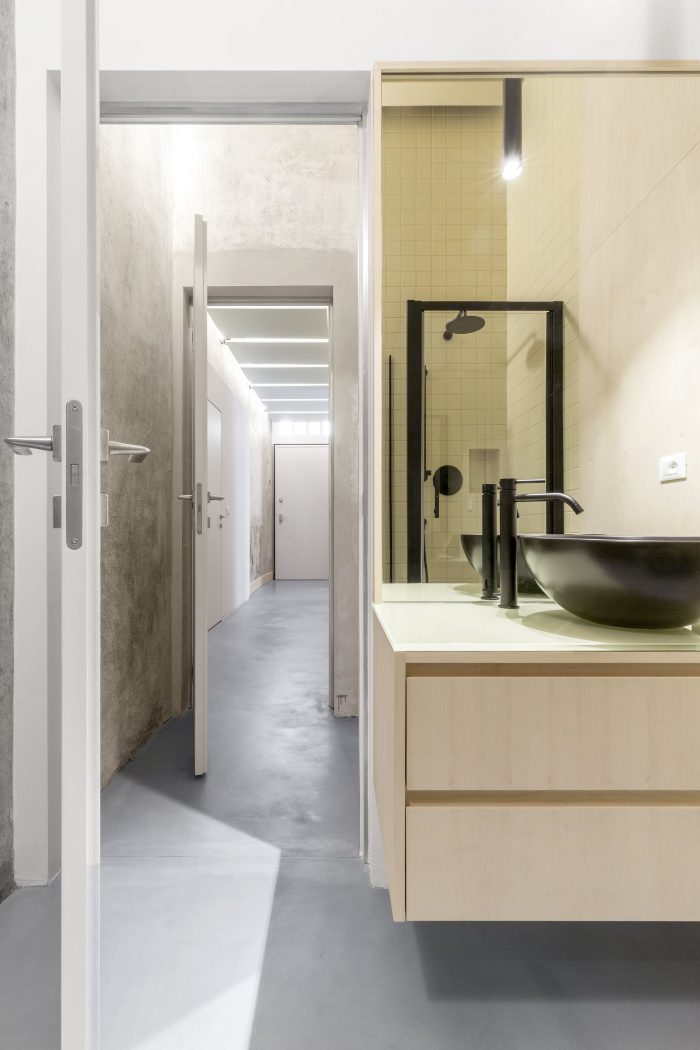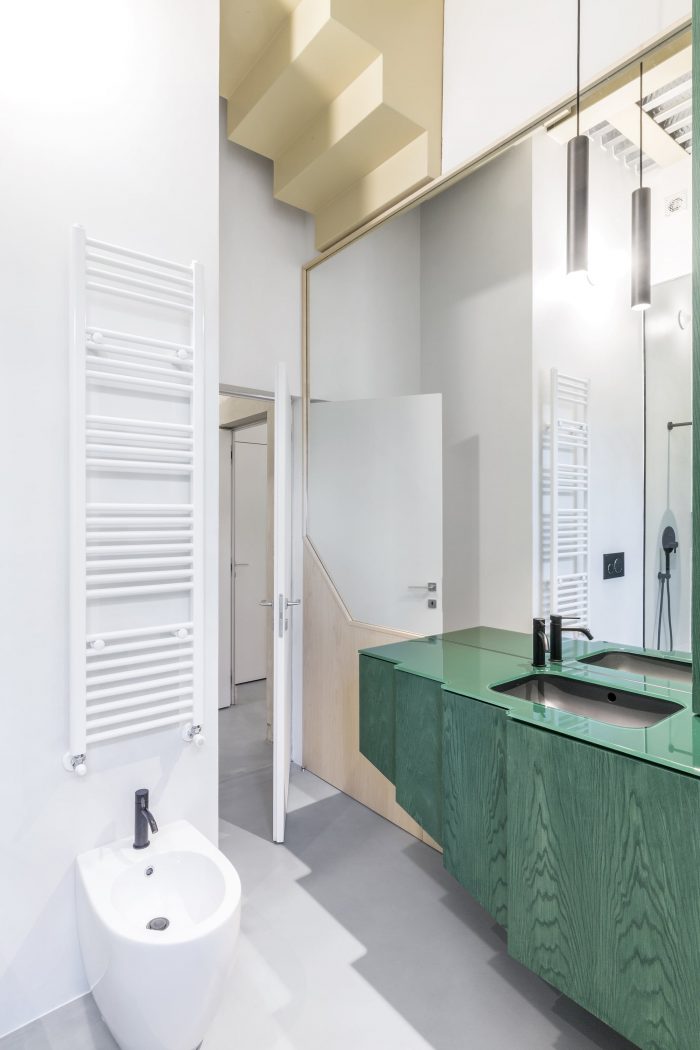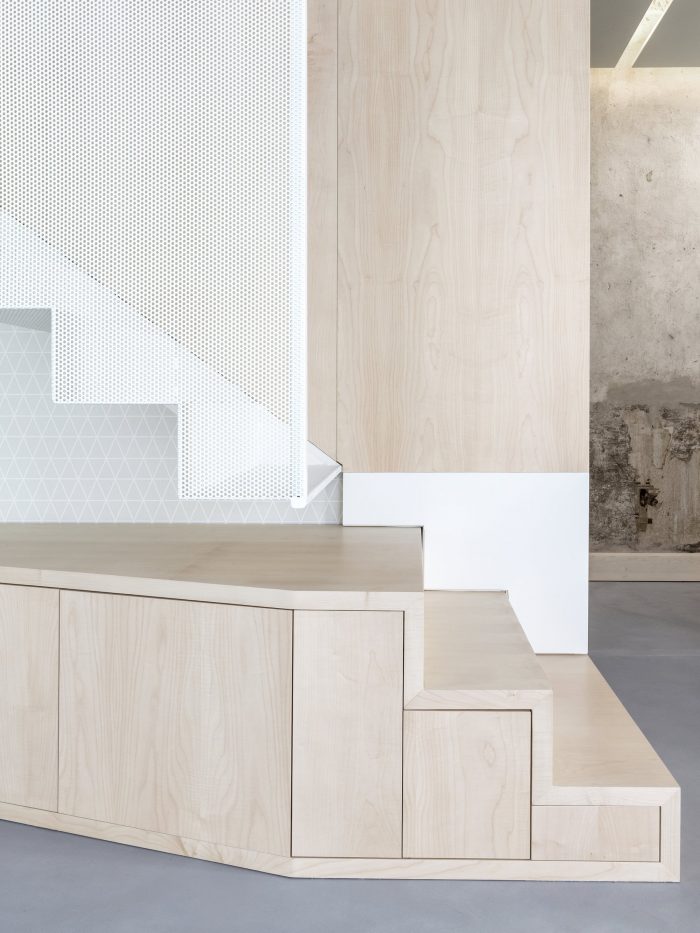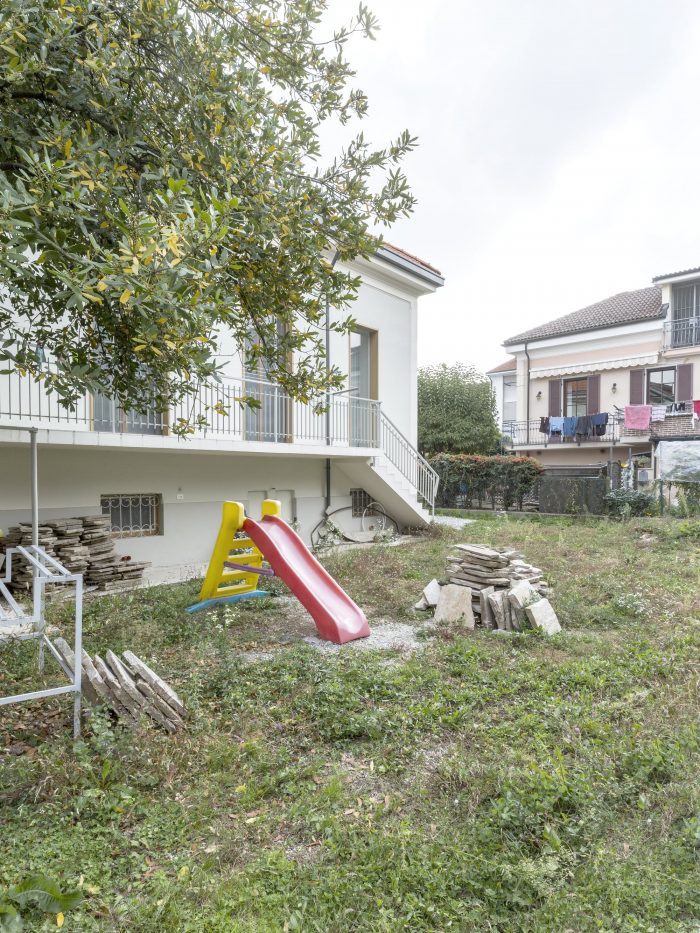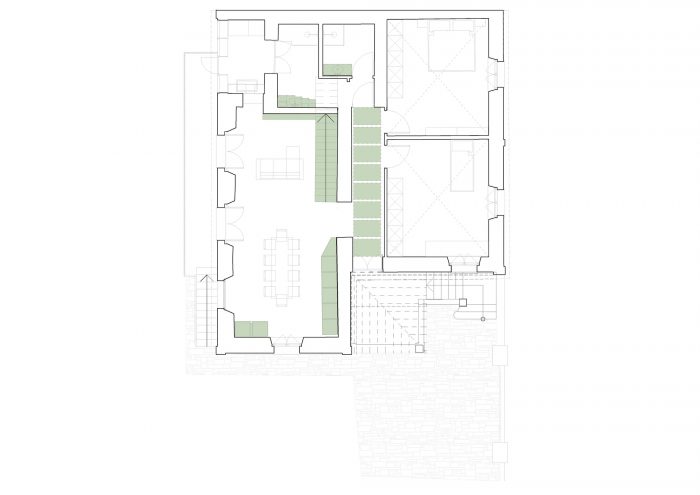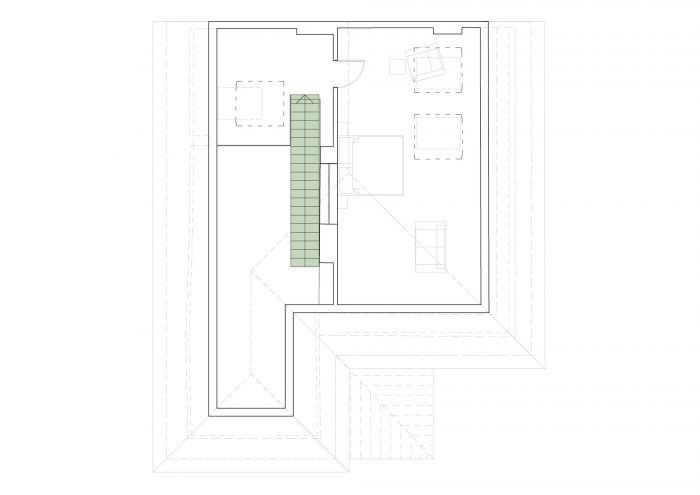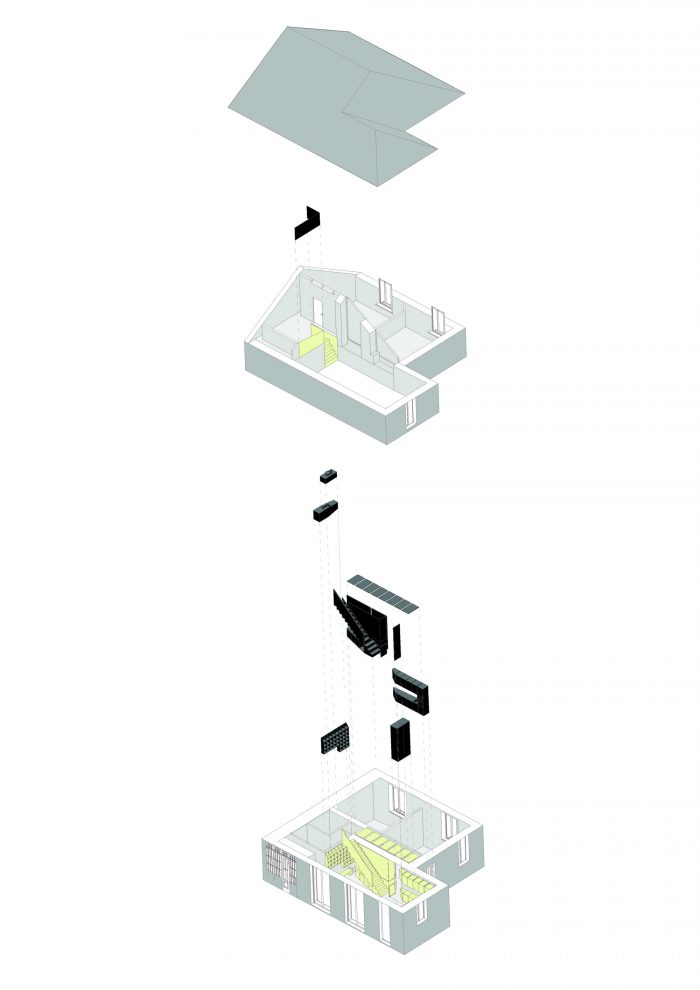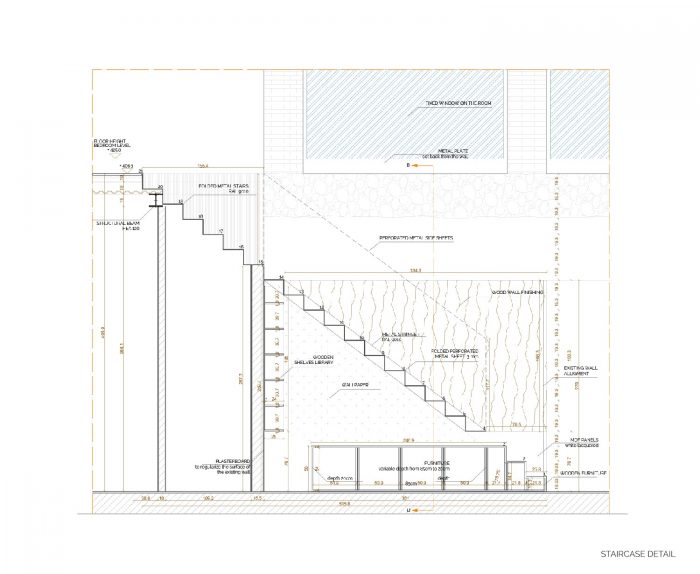本项目是对库内奥(意大利北部)市中心住宅区的一栋单户住宅楼进行翻新的结果。这座房子是一座意大利类型的豪宅,被称为 “dei Ferrovieri”,从1908年开始,国家铁路社会保障,开始通过这种建筑运动在意大利和历史中心附近的地区流行起来,然后,随后,所有这些建筑都被纳入城市组织中。本案中的建筑是1921年的,它是由建筑遗产委员会保存和约束的财产,保护其外墙和外部外观。因此,它被认为是一个内部设计的干预。
The presented project is the result of a refurbishment of a single-family residential building in a residential area of the city center of Cuneo (North of Italy). The house is a mansion of the Italian typology called “dei Ferrovieri”, which starting in 1908, the State Railways Social Security, began to populate Italy and the areas adjacent to the historical centers through this building campaign, Then, subsequently, all these buildings have been incorporated in the city tissue. The building in question is from 1921, it is a preserved and bound property by the Committee of Architectural Heritage which protects its facades and external appearance. It is, therefore, to be considered an interior design intervention.
我们采取的第一个选择,并希望从一开始就坚持的是对屋顶结构的维护。这对我们来说是一个基本条件。我们希望保持当时的内部精神,保留真实的木梁。它们的外观是设计空间的重要组成部分,它们的手工确认将很难用新制造的横梁来复制。
The first choice we took and wanted to remain adherent to from the beginning was the maintenance of the roof structure. It was an essential condition for us. We wanted to keep the internal spirit of the time, preserving the authentic wooden beams. Their appearance is an essential part of the design spaces, and their artisanal confirmation would be hard to be replicated with newly manufactured beams.
现代的一面是由非常深的颜色赋予的,它给人一种个人的环境,并产生了对天花板的习惯性认知的改变。我们也对未完成的饰面的外观感兴趣。有两个原因,第一个原因是为了保持房子的历史记忆,第二个原因是我们认为未完成的细节传递了一种真实的、真实的、更加好客的感觉。现有的墙体有一部分是在视线范围内的,有一部分甚至是1920年代的原始墙纸,还有一部分墙体的复古砖只涂了白色的灌浆。
The contemporary aspect is given by the very dark coloring which gives a personal environment and generates an alteration of the habitual perception of the ceiling. We were also interested in the appearance of the unfinished finishings. For two reasons, the first is to maintain the historic memory of the house, the second reason is that we believe the un-finished details transfer an authentic, true, and more hospitable feel. There are portions of the existing wall which are on sight, portions with even the original 1920s wallpaper, and portions of the wall with vintage bricks only painted with white grout.
楼梯是一个微穿孔的金属板元素,它是一个挑战重力的物体,并在透明度上发挥作用。与结构方面平行,还有家具和装备,这表达了我们的设计方式。由我们设计的物品与建筑的其他部分相融合。厨房、浴室和一些储物墙是用桦木做的,它们与房子的其他部分所用的材料相协调。
The staircase is a sheet metal element micro-perforated, it is an object that challenges gravity, and works on transparency. e It stands up thanks to its shape and its material’s properties, it only has lateral support and therefore it is very solid. Parallel to the structural aspects, there are furniture and outfitting, which express our way of designing. The objects, designed by us, merge with the rest of the building. The kitchen, the bathrooms, and some storage walls are in birch and they are in harmony with the materials used for other portions of the house.
Architects: Balance Architettura [BLA]
Area : 355 m²
Year : 2021
Photographs :Beppe Giardino
Manufacturers : Ceramica Vogue, Cielo, Elica, Fiora, Franke, Irsap, Smeg, Aqualuce, Connubia, Deco&Warm, Electrulux, Electrulux Rex, Esedra, Fotis, Geberit+Sigma, Kadeco, Novellini, OH, Paffoni, Teti
Lead Architects : Alberto Lessan, Jacopo Bracco
Job Captain : Eudes Margaria
Intern : Alp Arda
Architect : Alberto Cout, Irene Nequinio
Structural Engineer : Ivano Menso
City : Cuneo
Country : Italy

